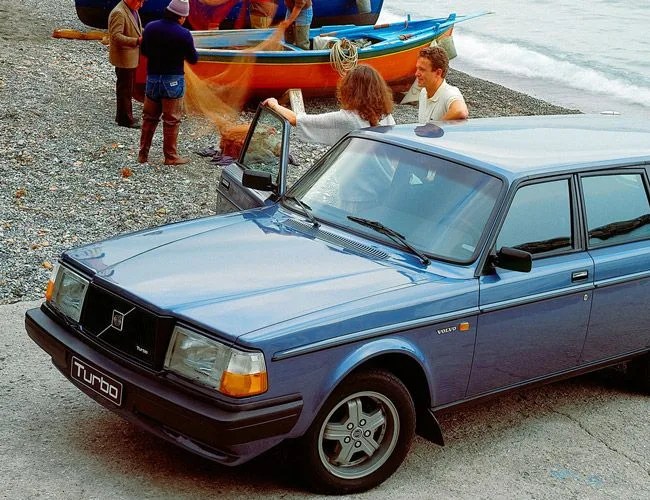As much as I’d love to press my garage door opener and find a wickedly fast Audi A6 Avant 3.0 TDI bi-turbo or Mercedes-Benz E63 AMG S 4Matic Wagon waiting within, the real wagon of my dreams might actually be even more difficult to come by and definitely moves at geologic speed compared to the aforementioned family rocket sleds. It may have the drag coefficient of a brick oven, but it’s so undeniable lustworthy among the station wagonistos that it borders on car divinity. An automotive Tasmanian Tiger, it’s been seen by few — but don’t make mistake its rarity for the true reason it’s coveted. It’s a true driver’s car that just happens to be an iconic station wagon, too. The Volvo 240 GLT Turbo Wagon takes the great, nearly bombproof bones and classic style of the 200 Series Volvos and adds performance and exclusivity. Granted, there are modern wagons that are faster, sleeker and far more technologically advanced that this turbo fridge, but they lack what the 240 GLT has in spades: attitude and a cool factor that cannot be duplicated.
MORE WAGON LOVE: Shooting Stars: 5 Best Station Wagons | Opinion: The Demise of the Station Wagon | Want This, Get This: Mercedes-Benz E63 AMG S 4-Matic Wagon or Cadillac CTS-V Sport Wagon
The original 200-Series Volvos were woefully underpowered but as tough as nails. I should know. My folks still own a near-pristine 1991 Volvo 240 GL with over 350,000 miles on it. It’s been from Chicago to Alaska and back. Twice. It’s survived decades in Chicago winters without batting a square headlight. The tractor-like 2.3-liter, 114 hp inline-four engine is a bastion of dependability despite its nearly non-existent acceleration. Some 240s have famously gone a million miles on a single engine, and their conservative, boxy look is still coveted today.
During the rare times when my family’s Atlantic Blue 240 GL has been in the shop for minor repairs other customers have asked if they could purchase it; my folks have even been stopped in supermarket parking lots by admirers offering to buy it for far more than it’s worth. Dad will never sell it, and I can see why. Whenever I drive it, I’m amazed by how well the steering responds. Despite body roll from the tall center of gravity, the stock 240 GL wagon is composed and predictable, and rear-wheel-drive makes it that much easier ot pilot. The driving position and visibility are excellent, and the seats are comfortable and supportive. Load in two weeks’ worth of vacation gear and the 240 will accept it without complaint. It may not be the even remotely quick, but it’s positively brilliant by virtue of its practicality, road manners and timeless looks.
4 photos
Then there’s the GLT Turbo version of the 240, first built as a sedan for the race circuit and then created as a wagon so consumers could enjoy its added power. Volvo turned their best-selling vehicle into a performance car that could operate on the European Touring Car Championship, adding a Garrett AiResearch BT03 turbocharger to their 2.1-liter four-cylinder and bumping up the power by 50 horses to 127 and 150 lb-ft of torque. It marked Volvo’s first use of turbocharging since their inception in 1927.
But it wasn’t enough to just add horsepower: the car had to possess improved handling dynamics. Suspension was enhanced via added gas-pressurized front shock absorbers and a beefier anti-roll bar. The rear setup was improved with a Panhard rod, trailing links, De Carbon shocks and a thicker anti-roll bar. These upgrades helped the car manage curves, plus they made the GLT Turbo 240 more controllable under hard driving, something all wagon drivers crave. Brakes were also upgraded to larger vented front discs for improved stopping power, much needed for a heavy wagon. The excellent monocoque body went unchanged, and the reliable engine utilized the same iron block and alloy head with two valves per cylinder and a single overhead camshaft. The compression ratio had to be lowered from 9.3:1 to 7.5:1 in order to allow for the turbo boost.




